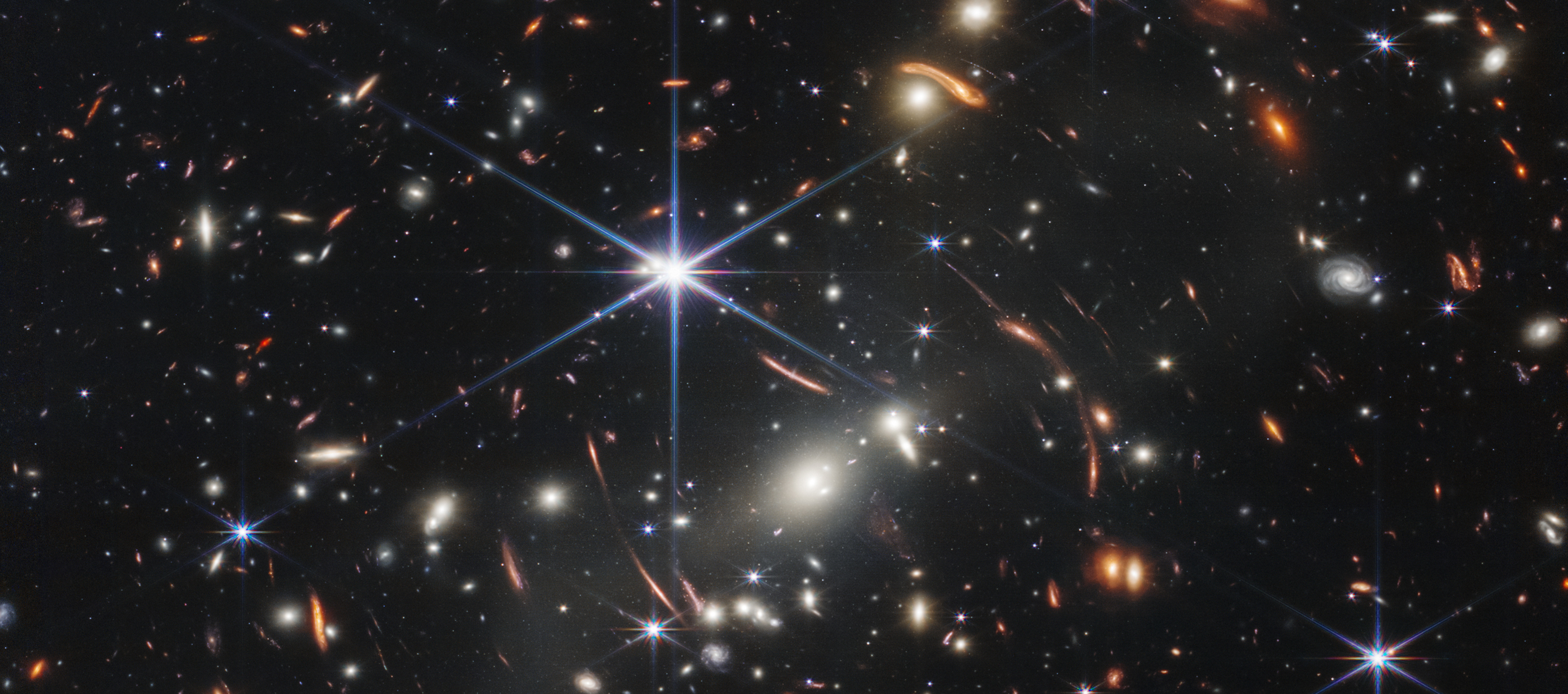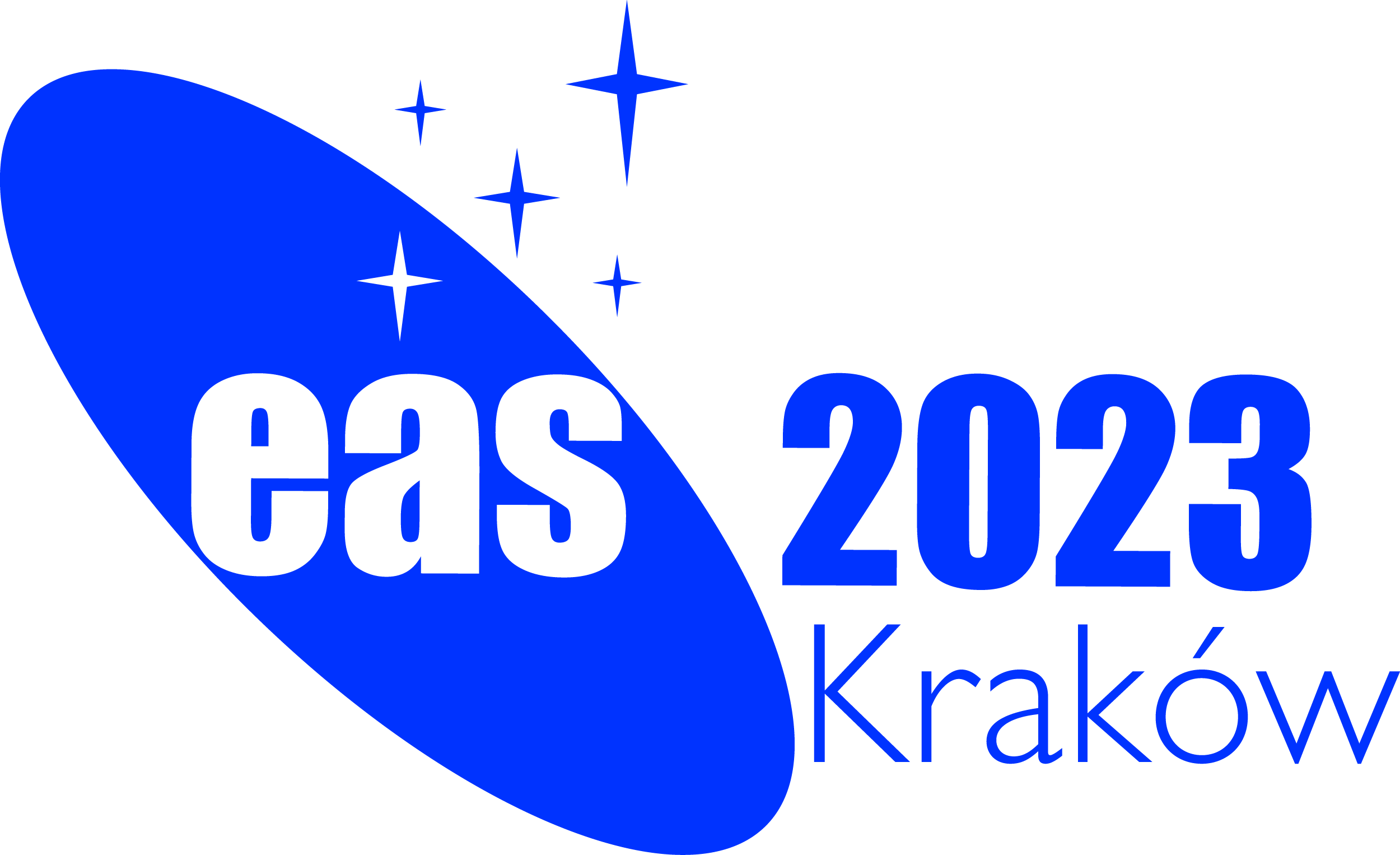Symposium S9
13-14 July 2023
Gravitational lensing in the eyes of the James Webb Space Telescope

Aims and scope
Gravitational lensing represents one of the key and most powerful tools to understand the growth of structure and the expansion of the Universe. The importance of lensing has been clearly appreciated in ambitious Hubble Space Telescope programs and their hyper-spectral follow-ups with ground-based observatories such as ALMA and the Very Large Telescope. The successful launch of the James Webb Space Telescope (JWST) on Christmas Day 2021 has opened a new era for the global Astronomical community. Its first scientific images were released to the public in summer 2022, building on the legacy of previous programs and the importance of gravitational lensing. Indeed the very first released image was that of a strong-lensing galaxy cluster, SMACSJ0723, which showed an impressive ensemble of arcs and lensed features. Since this historical moment on July 12 2022, other prominent galaxy clusters have been imaged with JWST in various other programs, including Early Release and Guaranteed Time Observation campaigns.
Data from the JWST are deeper, extend to infrared wavelengths, provide extremely sensitive infrared spectroscopy and have higher spatial resolution than that of the Hubble Space Telescope. As such, JWST opens a new window for lensing related science cases: the many more multiple images and their spectra observed through the eyes of JWST allow for much stronger and higher-resolution constraints on the underlying mass distribution in the lens, governed by that of dark matter; the high resolution imaging allows for observing extremely magnified clumps, such as star-clusters, and even individual stars at increasing cosmological distances; early galaxies are detected in higher numbers and to higher redshifts pushing towards z~15-20; and transient events such as supernovae or individual stars are seen to record-braking distances as well.
These discoveries happened in just over 2 months and allow Astronomers only a glimpse of what will be made possible with JWST. It is therefore absolutely timely for the lensing community to meet together, review, brainstorm, and discuss the prospects of lensing-related science in the exciting JWST era just after one year of observations. In particular, this Symposium will focus on strong- and weak-lensing modeling with JWST, considering the full range of cluster lensing regimes to obtain a complete view of the mass distribution of these objects, thus the possible contribution to cluster physics, lensing of transients and small sources such as star clusters, supernovae, and individual stars, as well as the study of lensed high-redshift galaxies and active galactic nuclei, their spectra, including lensed proto-clusters and ionized bubbles, and their contribution to the epoch of reionization. Such science cases have to be discussed in parallel with the possible synergies of JWST lensing with near-future instruments such as Euclid, the Roman Space Telescope, the Vera Rubin Observatory, and the Square Kilometer Array (SKA).
With this Symposium, we would like to bring together observers, modelers and theorists to discuss the prospects and new opportunities for lensing science now that JWST is active, addressing cluster physics, galaxy evolution, cosmology and the magnified Universe, probing the first stars and galaxies right up to the Dark Ages.
Programme
- Gravitational mass modelling in the era of JWST
- The Physics of Galaxy Clusters and the Dark Matter properties in the era of JWST
- The Physics of Galaxies in the era of JWST
- Lensed high-redshift galaxies, proto clusters & Reionization: first results from JWST
- Lensing of transients and other small sources: Distant magnified supernovae; Cosmological star clusters, and individual lensed stars through the early universe
- Long wavelength view of the Distant Universe: first results from JWST
Invited speakers
- Amruth Alfred (Hong Kong University, China)
- Catherine Cerny (Durham Unviersity, UK)
- Adela´de Claeyssens (Stockholm University, Sweden)
- Pat Kelly (University of Minnesota, USA)
- Guillaume Mahler (Durham University, UK)
- Ashish Meena (Ben Gurion University, Israel)
- Nicola Menci (INAF, Italy)
- Brian Welsh (NASA Goddard Space Flight Center, USA)
Scientific organisers
- Mathilde Jauzac (Durham University, UK) - Chair
- Jean-Paul Kneib (EPFL, Switzerland) - co-Chair
- Adi Zitrin (Ben Gurion University, Israel) - co-Chair
- Hakim Atek (IAP, France)
- Marusa Bradac (UC Davis, USA)
- Jose Maria Diego (Instituto de Fisica de Cantabria, Spain)
- Matt Hilton (Wits University, South Africa)
- Eric Jullo (LAM, France)
- Kenda Knowles (Rhodes University, South Africa)
- Priyamvada Natarajan (Yale University, USA)
- Jason Rhodes (JPL, USA)
- Keren Sharon (University of Michigan, USA)
- Ian Smail (Durham University, UK)
- Charles Steinhart (Neils Bohr Institute, Denmark)
Contact
For any queries, you should contact Mathilde Jauzac (mathilde.jauzac @ durham.ac.uk), Jean-Paul Kneib (jean-paul.kneib @ epfl.ch) and Adi Zitrin (adizitrin @ gmail.com).
Updated on Thu Apr 13 10:42:46 CEST 2023
|

 A power cut will shut down all EAS services on Tuesday, 10 January 2017 starting at 7:30 CET.
A power cut will shut down all EAS services on Tuesday, 10 January 2017 starting at 7:30 CET.


